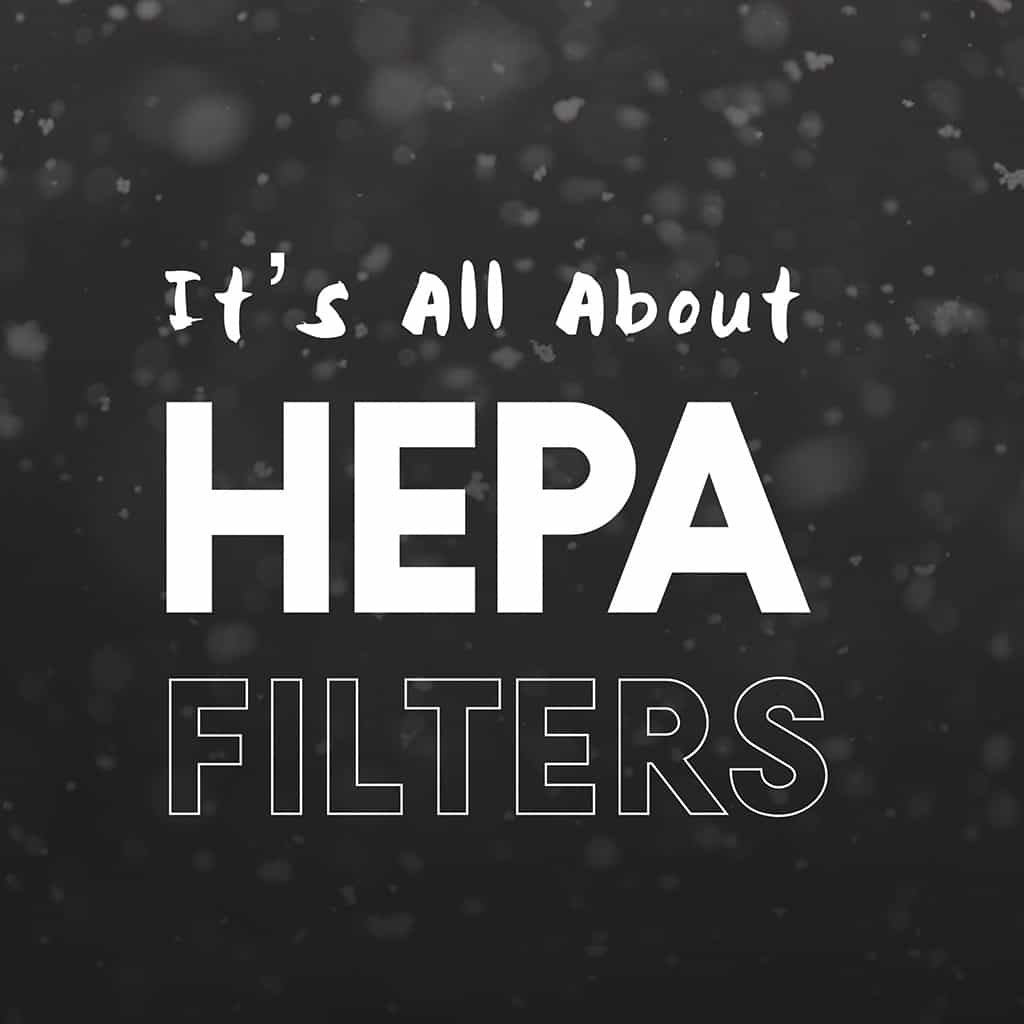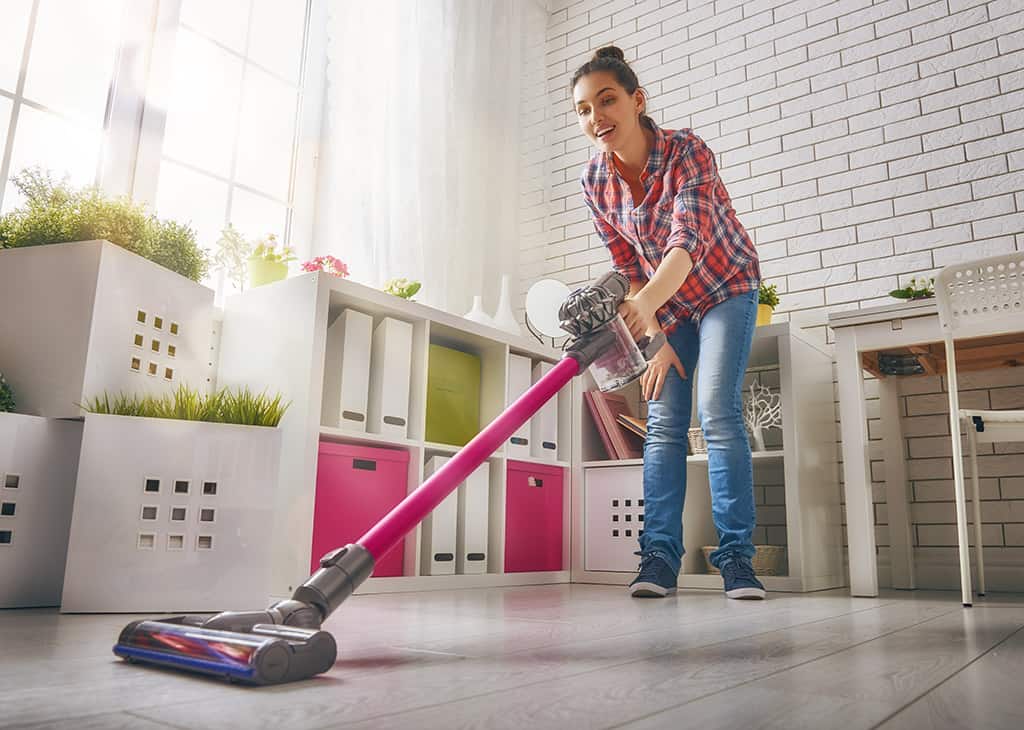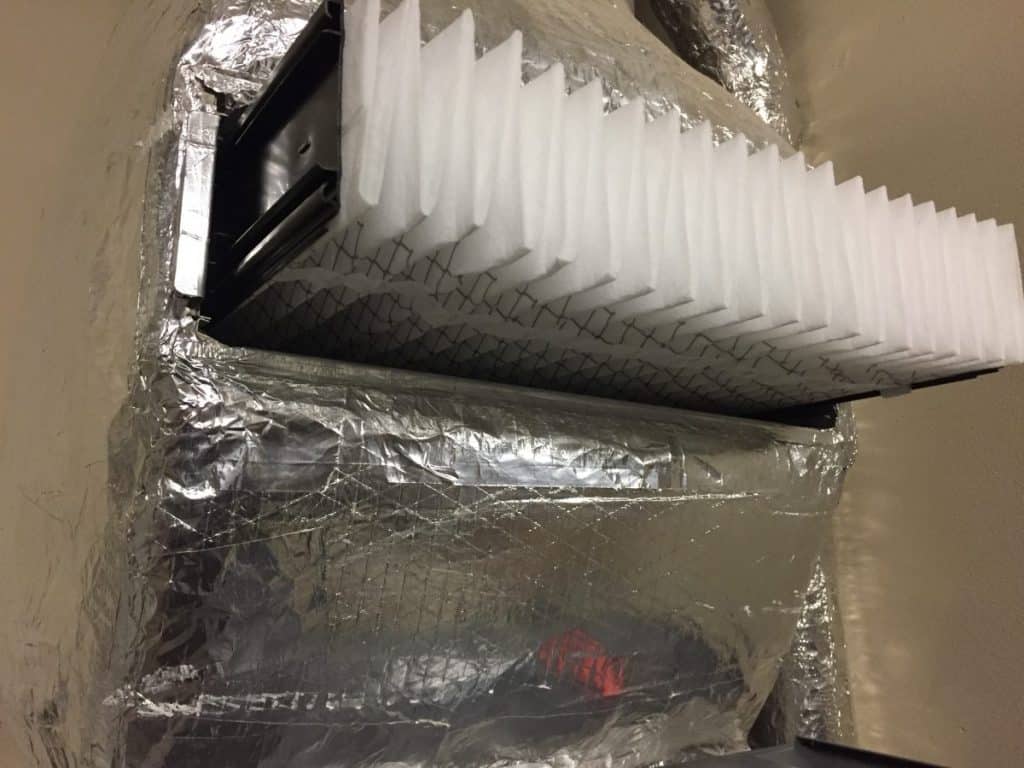If you’re shopping for an air purifier, you’ve surely seen the term HEPA. Purifier makers tout it as the best solution to air problems. So do review sites large and small. But, what does it mean? How will HEPA filters help you, what do they do, and what are the drawbacks?

| Works for | Doesn't Work for |
|---|---|
| Pollen | Cooking Odor |
| Pet Dander | Pet Odor |
| Ultra Fine Particles (.3 microns or larger) | Gas Filtration |
| Larger Smoke Particles | Smoke Odor |
| Airborne Dust Removal | Killing Mold |
| Trapping Airborne Mold Spores | Killing Viruses |
| Pet Hair | Killing Bacteria |
| Removing VOCs (Volatile Organic Compounds) |
Knowing what’s in your air purifier or HVAC is crucial. Many different devices use HEPA, but the filter always performs the same essential function. Not all HEPA products are created equal, and some offer more benefits and better results. You need to look at more than just the filter in order to make an educated purchase. But it’s a great place to start. We’ve put together a guide to help you better know HEPA products. Learn about their uses. And see how they fit into the bigger picture of pure air.
What Does HEPA Mean?
The letters of HEPA stand for High-Efficiency Particulate Arrestance. Sometimes you’ll see the “A” as just “Air.” But the terms are the same.
HEPA is not a brand, and the name covers a range of different filter products from multiple companies. Think of HEPA as a title earned rather than just a name. When a product has HEPA in the title, it’s proof that the filter meets regulated air cleaning standards. The IEST controls the standards for HEPA filters. And, only products that meet their exacting criteria get to call themselves certified HEPA products. To qualify, a filter must remove 99.97 percent of airborne particles that measure .3 microns or larger.
The best products exceed these standards, but this the bottom threshold for HEPA labeling ensures both quality and performance. Since it’s difficult to tell how many particles a filter captures, HEPA gives shoppers a standard to judge products by.
HEPA physically traps particles. Filter options are fairly diverse. They include everything from ionization to carbon in order to catch allergens, odors, car emissions. Multi-stage filtration tends to work the best. This is because each stage targets particles in different ways, but these filters all use the same principle technology. Tightly packed fibers make a web to trap particles within the filter itself. They physically catch passing particles, and when they’re dirty, they have to be replaced.
What’s the Big Deal about HEPA?
The of big strength of HEPA in air purifiers and other products is the ease of recognition. The letters are difficult to miss. Certified HEPA always removes 99.97 percent of particles .3 microns or larger. It’s similar to FDA approval. You know it meets basic standards.
PM10 particles measure fewer than 10 microns in diameter but greater than 2.5 microns. PM2.5 refers to particles smaller than 2.5 microns in diameter. Compare those figures to a human hair which measures between 50 and 70 microns in diameter.
US EPA
As manufacturing processes grow more advanced, the tried and true methods improve. Webs are tighter, and new materials attract and capture more particles. Forcing air through a HEPA style filter is still the most efficient way to clean particles from the air.
What Are the Cons?
While standard HEPA labeling helps, it doesn’t always find itself on a good product. Some companies squeak by the regulations and use an average filter in a poor product. It’s easy to see the HEPA label and assume you’re getting a quality product when you’re actually getting something else. Some products also use HEPA-type filters. These work in the same way as a certified filter, but have not been tested. Unfortunately, some manufacturers take advantage of how easy it is to confuse these terms. This is why thorough research and product reviews are important for consumers.
Apart from these issues, however, there are fairly few problems with the system. And, HEPA has more advantages than disadvantages. Technological advances necessitate changing standards, though. The existing HEPA requirements are aging. Therefore we think new standards should be applied in the next few years so HEPA can maintain its relevance.
Increase Performance and Breathe Easy
Buying a HEPA filter helps, but there are some other things you can do to improve results.
- Vacuum often to remove non-airborne pollutants. We recommend a vacuum with a HEPA filter.
- Regularly dust shelves, electronics, and other surfaces.
- Never smoke indoors. Resist the urge to use your wood-burning fireplace.
- Change the filter in your heating system or air conditioner. You may also want to have it serviced by a pro.
- Use the vent fans in your bathroom and laundry room regularly.
- Dust ceiling fan blades regularly.
- Avoid using candles and sprays.
- Use a vacuum to clean your purifier’s pre-filter occasionally.
- Check your local pollen forecast. Avoid open windows on high pollen count days. Also, run your purifier to capture any pollen or allergens that sneak into your home.
- Keep an eye on outdoor air quality reports. Smog, dust, and forest fires can introduce pollutants into your home.
The more you can do to reduce indoor pollutants before they need to be filtered the better. HEPA filters are great, but they perform even better when you do your part too.
Where Are HEPA Filters Used?
1. Home Air Purifiers

Air purifiers are the most obvious product to use HEPA filters. They make life easier for consumers with upper respiratory conditions, allergies, and persistent home odors. Many people choose to use air purifiers not just to relieve existing symptoms, however, but to generate cleaner, better-smelling air. HEPA filters do not provide you with any odor-fighting ability. So find a filter that works alongside HEPA to remove odor and gases. We suggest an activated carbon filter to remove stubborn odor.
2. Vacuum Cleaners

Vacuum cleaners collect dirt through suction. And, the suction process requires the machine to send the air it pulls in back into the environment. Top of the line vacuum cleaners use HEPA to keep collected dirt and dust inside the machine. Kind of like a mini purifier. Vacuums with these filters leave rooms cleaner, from the carpets you walk onto the air you breathe.
3. Home HVAC systems

Home HVAC systems are filtration systems that go into a home’s existing air conditioning and heating systems. Ventilation systems cycle air through the entire home. Thus, adding HEPA to HVAC turns the entire system into a massive air purifier. They are not as efficient as a freestanding air purifier for an individual room. But they do process a greater volume of air and improve air quality in the entire house. HEPA plays the same role in an HVAC that it does in a free standing air purifier.
HEPA filters are kind of hard to find if you’re shopping for a filter like the one pictured above. You may want to look for a filter with a high MERV rating.
4. HEPA in Cars and Airplanes

Cars cycle air through an air conditioner and heater. Specialized HEPA filters fit into many cars’ HVAC systems, which then gives the occupants fresh, filtered air whenever they drive. Since highways are full of toxic car emissions, car filters help many users breathe easier during long commutes. HEPA also helps scrub the air passengers breathe on almost every commercial aircraft.
We wrote an article a long time ago the covers the best in-car air purifiers. But, to save you some reading… if you can buy a Bosch in-cabin HEPA filter; do it. They reduce the oomph in your car’s vents, but they are hands-down the cheapest way to get an in-car purifier.
Are Some HEPA Filters Better than Others?
The short answer to this question is: yes. We talked about this briefly in the sections above, but there are many different filters from many different manufacturers. They use different web patterns to trap particles and advanced materials that attract irritants. They even create different shapes to maximize filtration time. For the most part, the larger the filter the longer it lasts. HEPA filters in purifiers like the stellar and affordable Honeywell 50250 and Austin Air Healthmate seem to last forever. Also, look for a purifier with a good pre filter, it will also help extend your filter’s life by preventing premature clogging.
Blueair pairs ionization with a HEPA grade filter, which charges the particles so they are attracted to the filter’s material. IQAir units trap particles as small as .003 microns. And, that is literally a hundred times more effective than the basic HEPA regulations require. RabbitAir, which markets heavily to families with children, uses materials they claim sanitize the particles captured in the filter. Alen also makes top notch purifiers that combine odor fighting features with an awesome filter. HEPA can cater to more needs than you realize, and finding your ideal filter requires some very careful research.
However, the best HEPA filters come from companies like those listed above. Those companies expand on the basic principles and requirements of HEPA regulations. In this purifier range, we also recommend that you look beyond CADR claims and focus on finding a quality product.
Beyond the Filter
A great filter doesn’t always equal a wonderful product. Even if you’ve found an air purifier or vacuum with a high-quality filter, you need to do some more investigation. The filter’s housing is very important, as is the machine that surrounds it. You can have the best filter on the market, but if the supporting product is shoddy, look elsewhere.
Filters rely on fans in order to work. It takes more pressure to force air through the filter than empty space. If air can find an alternate route, it will take it. A slight gap or crack around the filter renders strong fans and good filters are useless. If the purifier’s design doesn’t seal the filter, the majority of the air will sneak around the filter. It takes exacting construction standards to seal a replaceable filter into a product. Cheap products often fail to thoroughly seal the path between the fan and the filter, which ruins the entire process.
As great as HEPA is, filters function best as part of a team. The best air purifiers use anywhere from three to five different steps. By filtering out large particles before they can reach the HEPA media, you increase the filter’s lifespan. HEPA catches small particles, so multi-stage filtration allows them to function at peak capacity.
Final Thoughts
HEPA certification is a standard, but it’s a pretty basic standard. It gives consumers a place to start when analyzing a potential purchase. Unfortunately, many products with HEPA in the name are mostly junk. Thus, you really need to review a product carefully to be sure you’re paying for true HEPA filter. Not just HEPA style or HEPA inspired.
Although many products use HEPA filters, few need to live up to the same standards as air purifiers. While clean air is important, many air purifier owner’s need extremely clean air in order to live normal lives. HEPA is only one of those steps, even if it is the most thorough.
Bottom line… no matter where you live; a HEPA filter is the way to go if you want clean air.